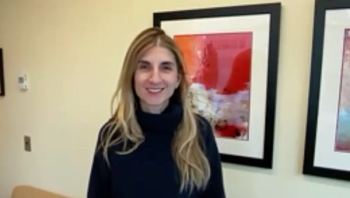
- ONCOLOGY Vol 16 No 1
- Volume 16
- Issue 1
Beyond Neutrophil Recovery: Manipulation of the Tumor Microenvironment by GM-CSF to Control Cancer
Cancer researchers can almost feel the ground rumble beneath their feet as they walk through their clinics and laboratories. A veritable explosion of information has radically altered the way we think about cancer, and has introduced new concepts
Cancer researchers can almost feel theground rumble beneath their feet as they walk through their clinics andlaboratories. A veritable explosion of information has radically altered the waywe think about cancer, and has introduced new concepts about treating orpreventing this dreaded set of diseases. Traditional approaches such as surgery,radiation therapy, and chemotherapy retain their important roles as strategiesto extirpate, lethally irradiate, or specifically destroy malignant cells.However, much has been learned about the ways malignancies functionabout theintracellular signaling, or "wiring" mechanisms that initiate orpromote growth on a background of defined changes in genetic structure. Suchinsights have led to very important new treatment strategies directed againstkey proteins such as c-kit, c-abl, HER2/neu, CD20, and the epidermal growthfactor receptor. As more pathways and nodal junctions are identified, it islikely that new treatments will continue to emerge for many cancers.
Interactions between cancers and their host environments offernew opportunities for therapy based on improved understanding of the nature ofthese interactions and the mechanisms that govern them. It is increasinglyappreciated that malignant cells create tolerant neighborhoods in which they canfunction with limited interference. Cancer cells recruit host blood vessels,co-opt regional fibroblasts, and shape the local immune response to permit theessential conditions for their survival and success. Malignancies must receivenutrients, must evade destruction via host immune recognition, and must be ableto locally invade and disseminate to distant sites. Understanding the mechanismsby which tumor cells manipulate the immune response remains an importantchallenge, but much has been learned. In this series of articles, entitled"Beyond Neutrophil Recovery: Manipulation of the Tumor Microenvironment by GM-CSF to Control Cancer," the clinical implications andexploitation of this information are discussed in considerable detail.
Immune Dysfunction and Treatment Strategies
A number of factors influence the immune response to autologoustumors. A recent provocative article by Shankaran and colleagues has revived andmodified the old concept of immune surveillance, providing new evidence that theimmune response to autologous tumors is "shaped" during the evolutionof the tumors. In this paradigm, autoreactive T cells are actually quiteeffective in identifying immunogenic tumor antigens; cells bearing such antigensare eliminated but variant tumor cells lacking these antigens survive. Throughsuccessive iterations of this process, the tumor cells that finally emerge areconditioned by these ordeals to be poorly immunogenic and superbly well adaptedto survive the rigors of a vigorous and effective immune response.[1] Thesebattle-hardened tumor cells express few, if any, potent immunogens, and mayelaborate factors that actively inhibit the immune response. For example, T-cellactivation may be thwarted through the tumor cell-directed degradation of theT-cell receptor zeta chain. Alternatively, the amplitude of the T-cell responsecan be dampened through tumor cell production of transforming growth factor-betaor skewed through the secretion of Th2 cytokines such as interleukin-10 toinhibit the establishment of an environment conducive to cytotoxic T lymphocyteactivation. These factors underscore the difficulties that are inherent tomanipulating the host immune response toward an effective antitumor outcome. Thecontribution by
Granulocyte-macrophage colony-stimulating factor (GM-CSF) is onesuch drug. Originally developed to accelerate neutrophil recovery followingmyelosuppressive chemotherapy, GM-CSF also accelerates the recovery ofmononuclear phagocytes and manipulates the functions of these cells in a varietyof ways. For example, GM-CSF is a growth factor that participates in the invitro expansion of dendritic cells; it is likely that this cytokine hasequivalent effects in the in vivo setting. The contribution by
Antitumor Immune Responses
Dendritic cells function as the key tumor antigen processors andinitiators of adaptive antitumor immune responses. Not surprisingly, it isincreasingly appreciated that there are multiple dendritic cell subpopulations,with defined functional differences based on cell of origin, state ofdifferentiation, and local environmental factors. Clinical descriptions of thisspecialization are urgently needed in order to home in on the subpopulationsthat require immunologic manipulation.
A large body of research indicates that GM-CSF promotes theprocess of antigen presentation by antigen-presenting cells such as monocytes,macrophages, and dendritic cells. Numerous investigators have shown that immuneresponses to autologous tumors are facilitated by the elaboration of highconcentrations of GM-CSF at tumor sites. Although there are differencesdepending upon the experimental systems employed, GM-CSF is the cytokine thatmost consistently promotes effective antitumor immune responses in animal modelsystems. Studies that test these concepts in human clinical trials are beingperformed. Even as these clinical studies accrue patients, much work remainsbefore we will fully understand the mechanisms by which GM-CSF exerts theseeffects. Many different mechanisms may be in play; GM-CSF promotes a Th1cytokine secretion profile at tumor sites, thus attacking tumor-derivedimmunosuppression and promoting the generation of productive, cytotoxic Tlymphocytes. GM-CSF promotes phagocytosis, alters the expression and function ofimmune costimulatory molecules, and also reverses immunosuppression.Accordingly, it is possible that treatment with GM-CSF could modify the tumormicroenvironment to favor the development of an effective antitumor immuneresponse. In an accompanying article,
Threads of information are slowly being woven together to createa tapestry of understanding regarding the ways in which the host environment canbe subtly altered so it is inhospitable for tumor growth. These threadsinterconnect in surprising ways: a cytokine that accelerates neutrophil recoveryalso promotes antigen presentation by dendritic cells, while a molecule thatpromotes angiogenesis inhibits dendritic cell function. By snipping some threadsand strengthening others a pattern that is fundamentally antagonistic to tumorgrowth is emerging. The challenge before clinical researchers is to learn how totranslate this understanding into improved therapy. The rumbling under our feetdoes not mean that we are about to be swallowed up, but rather is notice thatopportunity awaits and we had better get moving.
References:
1. Shankaran V, Ikeda H, Bruce AT, et al: IFN-gamma andlymphocytes prevent primary tumour development and shape tumour immunogenicity.Nature 410:1107-1111, 2001.
Articles in this issue
almost 24 years ago
Management of Patients at High Risk for Breast Canceralmost 24 years ago
World’s Largest Breast Cancer Treatment Trial Supports Anastrozole Usealmost 24 years ago
New Director of the National Cancer Institute Appointedalmost 24 years ago
Enforced Data Collection on Brain Tumorsalmost 24 years ago
Battle Over Physician-Assisted Suicide Continuesalmost 24 years ago
New Treatment for Stomach Cancer Patients Shows Promisealmost 24 years ago
Endoscopic Ultrasound in the Diagnosis and Staging of Pancreatic Canceralmost 24 years ago
Endoscopic Ultrasound in the Diagnosis and Staging of Pancreatic Canceralmost 24 years ago
Endoscopic Ultrasound in the Diagnosis and Staging of Pancreatic CancerNewsletter
Stay up to date on recent advances in the multidisciplinary approach to cancer.































































































